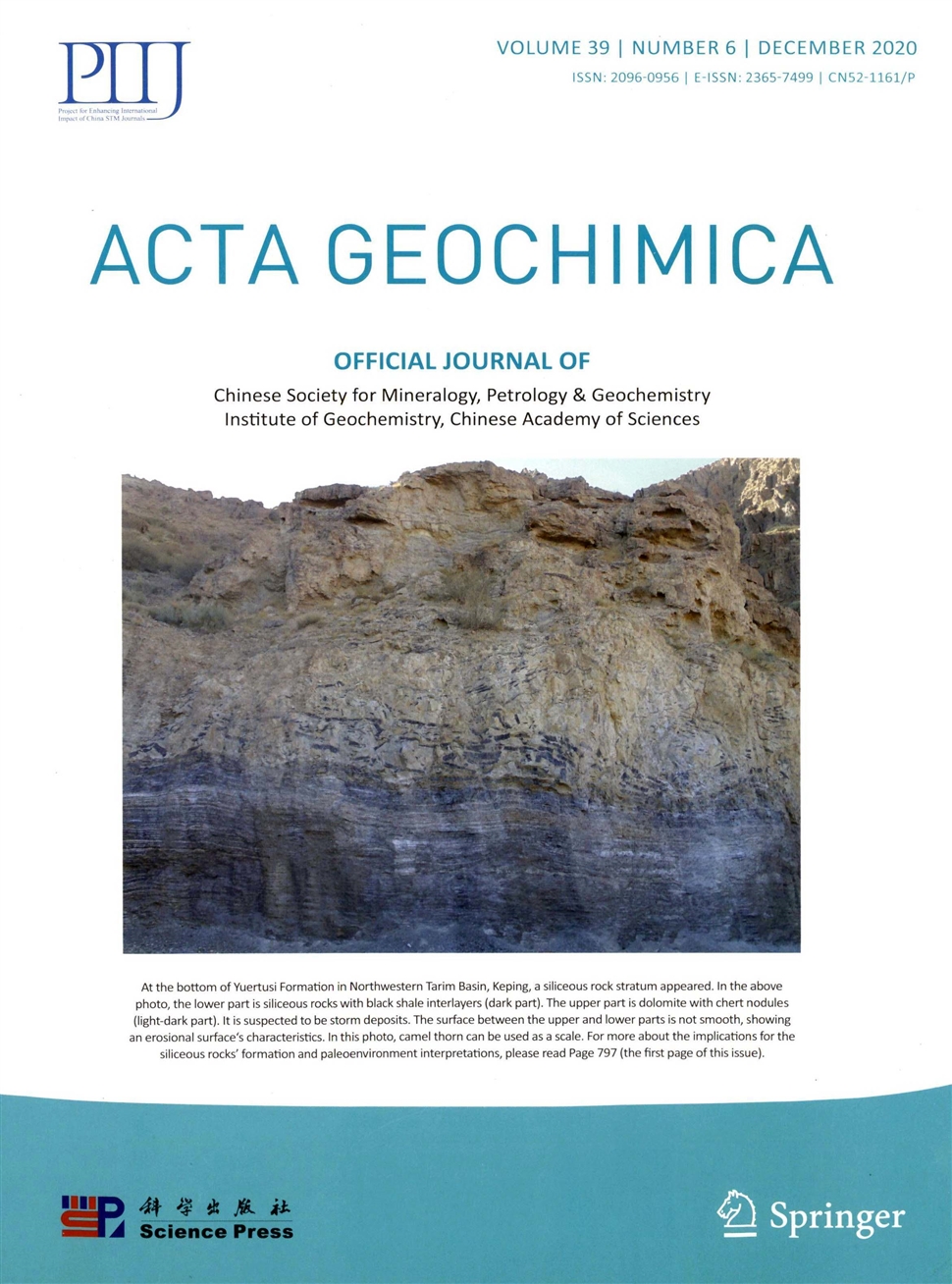Fluid properties and sources of Sixiangchang carbonate-associated mercury deposit,southwest China
作者:Yuzhou Zhuo,Yong Huang,Jinwei Li,Wei Gao,Jinxiang Li
摘要:Mercury mines in Guizhou province are the main base of mercury production and the most important resource base in China.The San-Dan mercury belt in Guizhou province contains a series of important mercury deposits.However,the source of metallogenic materials and the properties of metallogenic fluid of these mercury deposits have long been a controversial issue.In this study,we used cathode luminescence techniques to distinguish different stages of dolomite and calcite,laser ablation inductively coupled plasma mass spectrometry to analyze the trace elements,and stable isotope mass spectrometry techniques to analyze C-O isotopes compositions of dolomite and calcite in the Sixiangchang mercury deposit in San-Dan mercury belt.We also measured the sulfur isotope composition of cinnabar.Our study showed that dolomite can be divided into two stages,the lumpy dolomite associated with cinnabar in Dol 1 stage and dolomite vein in Dol 2 stage,which is associated with Cal 2 stage calcite vein.With the progress of mineralization,A1,As,Mo,Sb,and Sr elements were gradually enriched in the ore-forming fluid.The rare earth element(REE)partition curve of Dol 1 stage dolomite showed a trend of light REE enrichment.Cal 2 stage calcite and Dol 2 stage dolomite exhibited a flat-type REE partition curve,and Dol 2 stage dolomite showed a strong negative anomaly for Eu.δ^13C of carbonate mineral variation ranges from-6.89 to-2.16‰,whileδ^18O variation ranges from 13.80 to 23.09‰,and theδ34S variation range of cinnabar is 16.51-24.28‰.Carbonate mineral trace elements and C-O isotopes compositions suggested that early ore-forming fluid was reduced,and late ore-forming fluid was oxidized.The oreforming fluid of the Sixiangchang mercury deposit is a mixture of deep crustal fluid and meteoric water in deep thermal circulation,and involved in the oxidation of organic matter.The cinnabarδ^34S results showed that sulfur mainly came from seawater sulfate with the participation of microbial reduction.Sulfur is sedimentary in origin and wa
发文机构:State Key Laboratory of Ore Deposit Geochemistry College of Earth and Planetary Sciences
关键词:TraceelementsCarbonandoxygenISOTOPESSulfurISOTOPECALCITEandDOLOMITEYoujiangBasin
分类号: P[天文地球]
- Exposure of children to heavy metals from artisanal gold mining in Nigeria:evidences from bio-monitoring of hairs and nails
- Groundwater quality assessment using multivariate analysis,geostatistical modeling,and water quality index(WQI):a case of study in the Boumerzoug-El Khroub valley of Northeast Algeria
- Geochemical assessment,mixing behavior and environmental impact of thermal waters in the Guelma geothermal system,Algeria
- Isotherm and kinetic studies on the adsorption of humic acid molecular size fractions onto clay minerals
- REE geochemistry of core sediments of Cauvery delta,India for provenance studies
- Geochemical characterization of Granitoids in Katchuan Irruan area:further evidence for peraluminous and shoshonitic compositions and post-collisional setting of granitic rocks in the Precambrian Basement Complex of Nigeria
- The occurrences and geochemical characteristics of thorium in iron ore in the Bayan Obo deposit,Northern China
- Fluid inclusion and H-O isotope study of the Jiguanshan porphyry Mo deposit,Xilamulun Metallogenic Belt:implications for characteristics and evolution of ore-forming fluids
- Development of a 100 MPa water–gas two-phase fluid pressurization device
- Studying DDTs in agricultural soils of selected rural communities of Armenia


